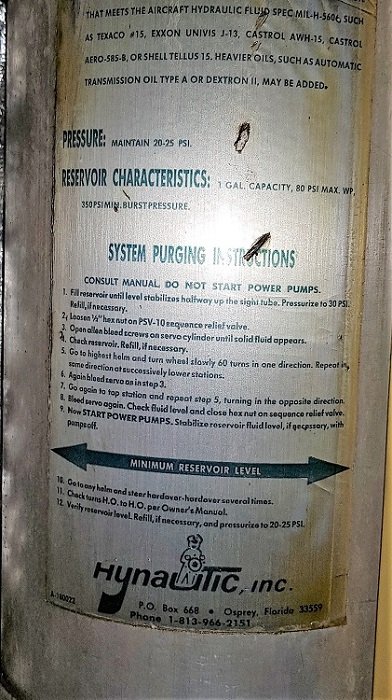Arun, nice vessel btw, always liked the Halmatics, the Maryland Pilots have a few that I've inspected, incredibly durable.
Unless it's an emergency, I'm not sure I'd advocate the use of "any 15 weight oil". I've always used the specified hydraulic oil or ATF (and some Seastar systems specify this).
From Seastar/Hynautic...
Recommended oils for your steering system are: SeaStar Fluid, P/N HA5430 (1 quart), HA5440 (1 gallon). The following brands are acceptable: Chevron® Aviation Hydraulic Fluid A, Esso® Univis N15 or J13, Mobil® Aero HFA, Petro Canada Harmony HV115 (in Canada only), Shell® Aero Fluid #41, Texaco® HO15 and other fluids meeting MIL SPEC H-5606-G.
Automatic transmission fluid (Dexron II®) may be used in an emergency. Never use brake fluid. Any non-approved fluid may cause irreparable damage, loss of steering, and cancellation of warranty.
In cases of extreme emergency any nontoxic, nonflammable fluid may provide temporary steering.
Generally, 2 quarts are required for single station, single cylinder filling. Add one quart per additional station or cylinder.
Please note that SeaStar Capilano systems use Dexron II ATF, not SeaStar steering fluid.



